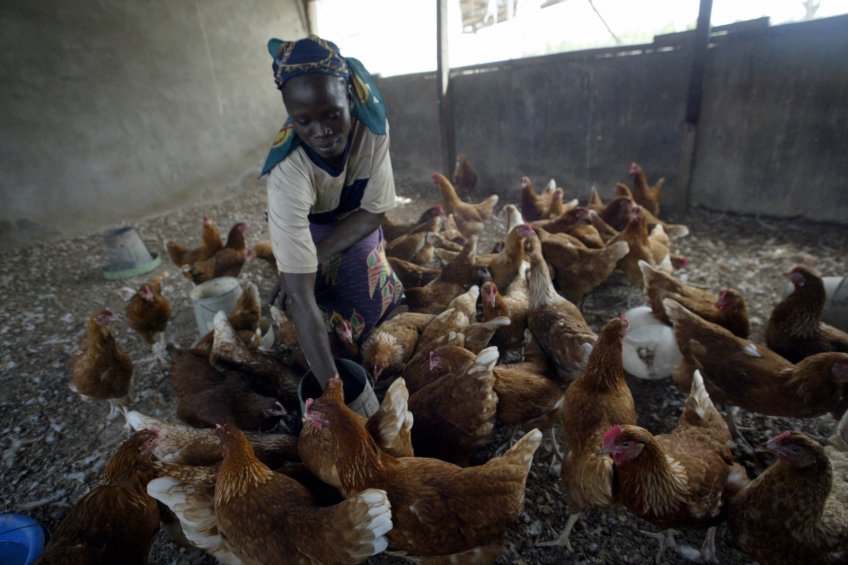FAO calls for increased H5N1 vigilance in Africa

Countries across West and Central Africa are on alert as the highly pathogenic avian influenza virus H5N1 continues to spread across the region, with Cameroon becoming the latest African country to detect the disease.
The latest H5N1 outbreaks were recently confirmed on chicken farms in Cameroon putting the poultry production in the country and its neighbours at high risk. This is the first time the disease has been found in Central Africa since 2006.
African nations affected by AI
This brings the number of countries that have battled avian influenza in West and Central Africa to six, also including Burkina Faso, Cote d’Ivoire, Ghana, Niger and Nigeria.
Nigeria continues to be most affected with the total number of outbreaks exceeding 750 with nearly 3.5 million birds dead or culled. The newly recorded outbreaks in Cameroon raise significant concerns that the disease may be advancing southward, triggering national and global emergency responses to contain the disease, and health screenings of poultry workers.
Heightened surveillance and prevention efforts
FAO, meanwhile, is alerting neighbouring governments to be vigilant and continue their heightened surveillance and prevention efforts, including common messaging to the public and data sharing between the public health and agriculture sectors.
“We’re looking at a quickly spreading disease that has devastating effects on livelihoods in communities,” said Abebe Haile Gabriel, FAO Deputy Regional Representative for Africa. “H5N1 causes major losses of nutritious food and threatens farmers’ livelihoods, particularly in resource-poor environments where governments have difficulty providing financial compensation for losses,” he said, adding that “trade restrictions often pose an additional hardship on already struggling economies.”
Huge financial losses due to AI
The H5N1 strain of avian influenza has caused the death of tens of millions of poultry and losses of tens of billions of dollars worldwide since the virus first spread internationally in 2013 — in Cameroon alone, losses have added up to an estimated $20 million, according to local media reports.
FAO is working closely with the World Health Organization (WHO) and the World Organisation for Animal Health (OIE) to offer member-countries assistance, such as risk assessments, contingency planning, technical advice and laboratory material. They also help with investigating potential avian influenza cases in animals and humans and locating the source of infection.
Control methods
Response interventions include culling infected and exposed poultry, disinfecting premises and markets and safely disposing of dead birds. Veterinary officers, meanwhile, are encouraged to use basic techniques like ‘trace-forward’ – which looks at where infected animals have been sold or moved to – and “trace backward” – examining where infected animals were purchased or where they came from – to find sources with the ultimate goal of halting continuous virus introduction or further spread.
A major concern is that the disease may become endemic in the entire region, particularly in Nigeria where avian influenza has become so entrenched in poultry production and marketing systems that it will be difficult to eliminate. For that reason, producers and traders need to be made aware about the clinical signs of the disease symptoms, how and to whom to report it, and implement good hygiene practices to halt its spread.













